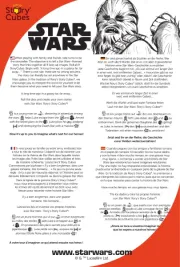Amigo Saboteur the lost mines Handleiding
Bekijk gratis de handleiding van Amigo Saboteur the lost mines (3 pagina’s), behorend tot de categorie Bordspel. Deze gids werd als nuttig beoordeeld door 61 mensen en kreeg gemiddeld 4.5 sterren uit 31 reviews. Heb je een vraag over Amigo Saboteur the lost mines of wil je andere gebruikers van dit product iets vragen? Stel een vraag
Pagina 1/3

15 6
©2019 AMIGO Spiel + Freizeit GmbH. Saboteur The Lost Mines is a trademark of AMIGO Games Inc., Round Rock TX 78664.
If you have questions on these rules or on any of our products, please call us at 844-962-6446 extension 0
M-F 9:00 – 6:00 Central Time.
We’ll do our best to help you.
www.amigo.games e-mail: info@amigo.games
The Object O
Card by card, you and your clan work together to create a path through the forest. Along the way, trolls will block your
path and traps will make you lose cards from your hands. To overcome the obstacles you will encounter, you’ll need to
collect and employ the right tools. The goal is to move your dwarves along the paths to reach the four mines and claim
the treasures they contain. At the end of the round, you’ll split the spoils with your teammates. But beware, although
each member of your clan gets a fair share, there are dwarves who only work for themselves or for the other clan!
The player who collects the most valuable treasures (and the most victory points) over two rounds wins the game.
Step 2. Move Your Dwarf
After you have played or discarded cards, you move your dwarf . You may up to 3 cards
can only move your dwarf along existing pathways.
Example: After you have played a card, move your blue dwarf 3 cards along the path.
These special cases can affect how you move your dwarf:
If your dwarf begins a turn on a card with a campfire, you may move it spaces on this turn.up to 5
You can‘t land on or cross path cards with an obstacle that has not yet been overcome (with a tool).
Rocks and obstacles that have been overcome can be occupied by only 1 dwarf at a time. A second dwarf may
neither land on this card nor pass through it if there is another dwarf on it.
A troll blocks the path it is on. You can‘t move onto or off of a card through the path connection the troll is on.
If you move your dwarf over a trap, you lose 1 card from your hand. The player to your left picks any immediately
card from your hand and discards it without looking at it.
Note: start If you don’t have any cards in your hand at the of your turn, you can‘t move your dwarf. You lose your
entire turn.
Mines and Treasures
If you‘re the player to move your dwarf onto a mine, turn over that mine card. Adjust it so it fits the existing first
network of paths at its location. moving and put your dwarf on the mine.Stop
Note: Sometimes, when you turn over a mine, it won‘t fit into the network of paths on all sides. In this case, adjust it so
that it can be reached through the pathway you used to get there.
There are four different mines: three containing treasures and one that‘s guarded by the dragon. The symbols on the
three treasure-filled mines match the symbols on the of the treasure cards.back
After ending your movement on a mine, take card that matches the treasure shown on that mine, if there are still any one
available. Place the treasure in front of you, face down. If you are still on the mine at the end of your next turn (because
you haven‘t moved your dwarf) take another card with this type of treasure if there are any left. If another player moves a
dwarf onto the now face-up mine, that player also collects a treasure card that matches the mine if there are any left.
Example: You move your yellow dwarf onto a face-down mine. Turn over the mine card and put it back on its space.
It‘s the gold mine, so take one golden treasure card and place it in front of yourself, face down.
The Dragon Mine
If you turn over the mine guarded by the dragon (because you were the first to get there) you take must
the dragon token and put it in front of yourself. At the end of the round, this will cost you 2 victory
points.
After that, treat this mine card just like a regular path card. From now on, all players can move through
this card without any penalty.
Step 3. Draw Cards
At the end of your turn, you draw cards if there are any left in the draw pile. If you played a path or action card must
this turn, draw 1 card from the draw pile. If you have discarded cards, draw as many cards as you discarded (1 or 2).
Note: If the draw pile runs out, don‘t draw any more cards for the rest of the round.
The End of a Round
The round ends when one of the following occurs:immediately
The draw pile has run out and none of the players have any cards left, or
All the treasures have been collected.
Note: As a group, you can all decide together that a round is finished if one or more mines can no longer be reached
and its treasures can no longer be collected.
Divvying Up the Treasures
Once the round is over, turn over your dwarf cards and reveal your identities. Then, turn over your treasures, and divide
them as follows:
Selfish dwarves get the value of any treasure they have collected themselves as victory points.
All other players get together with their clans. If there are , they join the clan for the final tally. saboteurs opposing
Add up the values of your clan’s treasures and convert them into victory points.
Divide the clan‘s victory points evenly between all (non-selfish) dwarves in that clan. If there are any victory points
left over, give them to the player who collected the single most valuable treasure. If more than one player has
collected the most valuable treasure, split the remaining victory points between those players evenly. If you still
have victory points left over, no one gets them.
If you have the you must hand in two of the victory points you collected during this round. If you only dragon token
collected one victory point (or none at all) this round, you only have to hand in one (or none).
Example:
The two loyal yellow dwarves have
collected 8 victory points, which they
now split evenly between themselves.
The two loyal blue dwarves and the
yellow saboteur have also
collected 8 victory points that they
split between themselves as evenly
as possible (2 each). The 2 remaining
victory points go to the yellow
saboteur, because she contributed
the single most valuable treasure,
worth 4 points. However, one of
the two loyal blue dwarves has also
picked up the dragon token. He has
to give his two victory points back.
The blue clan‘s selfish dwarf keeps
all of her treasures for herself, and
collects 3 victory points.
A New Round Begins
Set up the second round just like the first: Re-shuffle the mines, redistribute the treasures, re-shuffle and deal out new
dwarf cards and, if necessary, give a new dwarf to each player. Shuffle all the path and action cards together, set 10 of
them aside, and finally deal 5 cards to each player (4 if there are 7–9 players).
The new round starts with the player to the left of the last player to play a card in the first round.
The End Of The Game
The game ends after the second round. The player who has collected the most victory points wins the game. If there is
a tie, all tied players are winners.
Note: Of course, you may decide to play three or more rounds if you like, in order to determine a clear winner. Each
round extends the duration of the game by about 20 minutes.
GAME DESIGN COUNCIL
From time to time, we ask our customers to review games for us and give comments on the gameplay, packaging styles, and other
attributes in return for free games. If you’re interested in helping us, please visit www.amigo.games/contactus to sign up or send an
email to info@amigo.games with “Game Design Council” in the subject line.
OUR NEWSLETTER
If you’d like to sign up for our email newsletter so you can learn about our other games, please visit www. amigo.games/newsletter.
10 Dwarf Cards
Contents
1 Game Board32 Victory Point Tokens
10 Dwarves (with Bases)
14 Forest Tokens
10 Dwarf Tokens
by Frederic Moyersoen, with illustrations by Alexander Jung
Players: 3 to 9 Ages: 10 and up Duration: about 45 minutes
Although this game is designed for ages 10 and up, the components listed in red are a choking hazard.
Please take special care to keep these components away from young children.
40 Path Cards 23 Action Cards
2 Starting Cards
12 Treasure Cards
4 Mine Cards
Gemstones Gold Silver Dragon
0
1 Dragon Token
™
V1-0119
If you’d prefer to learn to play by
watching a short video, please visit
www.amigo.games/game/lostmines.

2 3 4
The Dwarf Clans
In Saboteur – The Lost Mines, you are a member of one of two rival dwarf clans: the blue dwarves and the yellow dwarves.
Up to five dwarves from all of them work loyally for the benefit of their own team.
Preparation
Place the game board on the table.
Shuffle the 4 mines face down and put them on the mine spaces on the board, .
Put the two on the start spaces on the board.starting cards
Shuffle the treasures and place a number of them equal to the number of players next to the edge of the game board,
face down. Put the remaining treasures aside without looking at them: You won’t need them for the rest of the round.
Prepare the . In a game with seven or more players you will use all of them, but in smaller games you dwarf cards
need to remove specific dwarf cards before the game:
If there are 5 or 6 players, remove from each clan.1 loyal dwarf card
If there are 3 or 4 players, remove from each clan.2 loyal dwarf cards
Shuffle the and give one to each player. Take a good look at your card revealing it to the other dwarf cards without
players, then put it face down in front of you. The other players are allowed to know which clan you belong to at all
times (this is shown on the back of your card), but your true identity (the front of your card) until must stay secret
the end of the round. Put any remaining dwarf cards aside without looking at them.
Pick a dwarf from your clan, put it into a base, and take the corresponding . Place your dwarf on your dwarf token
clan’s starting card on the board and put the token in front of you where everyone can see it, so they’ll know which
dwarf is yours.
Shuffle all the and together. Take 10 cards from this pile and put them aside without looking at path action cards
them; you won’t use them in the current round. If there are 3–6 players, deal 5 face-down cards to each player for
their starting hands. If there are 7-9 players, deal 4 cards to each player. Put the remaining cards in a face-down
draw pile next to the game board. Make sure to leave enough space for a (face-down) discard pile you’re going to
create over the course of the round.
Set the forest tokens dragon token victory point tokens, the , and the within easy reach.
How to Play
The shortest player goes first, then play passes to the left. On your turn, you must carry out the following actions in this
order:
1. Play 1 card or discard 1–2 cards (required)
2. Move your dwarf up to 3 cards (optional)
3. Draw 1 or 2 cards from the draw pile (required)
After you draw, your turn is over and the next player’s turn begins.
Important: If the draw pile runs out, skip over step 3 and don’t draw any more cards. If you don’t have any cards in your
hand at the start of your turn, you must skip your turns for the rest of the round.
Step 1. Play Cards
At the start of your turn, you play 1 card or discard 1 or 2 cards from your hand. Choose one of the following must
options:
A – Play 1 path card on the game board
B – Play 1 action card, or
C – Discard 1 or 2 cards
A – Play 1 path card on the game board
The path cards are used to build pathways from the starting cards to the mines on the
game board. If you choose to play a path card, you must place it next to one of the
starting cards, a previously played path card, or a face-up mine paths (see page 5). All
shown on the sides of the new card must connect to the paths on previously played path
cards on all sides where they touch. Also, every card you play must extend an already
existing path.
Note: not The card you play does necessarily have to connect to your own starting card
or your own dwarf, as long as you follow the rules above.
Examples of incorrectly placed path cards: has not been placed next to an existing
card; does not connect on all sides;
does not extend an existing path.
Special Path Cards
Obstacles: Obstacles block the way. You can only move your dwarf onto or past these path
cards after someone has played the matching tool that overcomes the obstacle.
There are three types of obstacles: tree trunks, lakes, and ditches.
B – Play 1 action card
Action cards allow you to overcome obstacles, gain secret information, set traps, attract trolls, or remove path cards and
forest tokens from the game board.
Action Cards With Tools
Each of the three kinds of obstacles can be overcome with its own special tool. You can only play a tool if the
corresponding obstacle has already been placed on the game board. When you play a tool, show the card to the other
players, then put it face down on the discard pile. Take the matching forest token from the supply and put in on top of
the obstacle. That obstacle has been overcome, and the path card can be used by all dwarves from now on.
Note: After an obstacle has been overcome, only 1 dwarf at a time can occupy that card, and an occupied obstacle card
cannot be passed by any other dwarves (just like a rock card).
Action Cards That Gain Information
These action cards allow you to gain information about the mines, the treasures, or the other
players. When you play one of these cards, show it to the other players and put it face down
on the discard pile. Each card gives you Pick and carry it out. Keep the two options: one
information you’ve gained to yourself and don’t reveal it to the other players!
Action Cards With Events
When you play a action card, show it to the other players and put it face down on the discard pile. “trap”
Take the corresponding forest token and place it …“trap”
on a path connecting two cards already on the game board, or
on the open end of a path (i.e., the path that connects a path card to the unused area of the game
board).
Whenever your dwarf moves past a trap, you immediately lose one card from your hand. The player on
your left picks a card from your hand and puts it onto the discard pile, face down, without looking at it.
You may not replace lost cards, so you must play with one card less for the rest of the round.
When you play a action card, place it in front of you, face up. Take the corresponding forest “troll” “troll”
token and place it …
on a path connecting two cards already on the game board, or
on the open end of a path (i.e., the path connecting a path card to the unused area of the game
board).
The troll blocks this section of the path for all dwarves until it‘s your turn again. At the start of your next
turn, remove the troll and put the action card face down on the discard pile.
Some examples of the correct
placement of traps and trolls.
Note: If a trap or a troll covers the open end of a path, you may still add path cards there
in order to extend the path.
When you play a action card, show it to the other players and put it face down on the “thunderstorm”
discard pile. Then, remove from the game board. any one path card that does not have a dwarf on it
If there is a tool (axe, boat, or rope) on the card, remove it as well. Put the card you‘ve removed on the
discard pile, face down. Remove a trap or a troll token as well, but only if it is now lying on two empty
spaces of the game board (after you remove the path card).
Important: cannot You use a thunderstorm to remove a starting card or mine.
C – Discard 1 or 2 cards
If you can‘t play a card for action A or B, or if you not to, you discard from your hand instead. choose must 1 or 2 cards
Put the discarded cards on the , face down.discard pile
The Dwarf Clans Loyal Dwarve
Rocks: Rocks are bottlenecks. Only 1 dwarf
may stand on a card with a rock at any
time, and an occupied rock cannot be
passed by any other dwarf.
Campfire: If you start your turn on a
campfire card, you can move up to
5 cards that turn (instead of up to 3
cards—see page 5, “Step 2. Move Your
Dwarf”).
Secretly look at a that hasn’t been mine
revealed yet. Then put the mine back in its
place, face down.
Secretly look at a that hasn’t been treasure
collected yet. Then put the treasure back in its
place, face down.
✔
✔
✔ ✔
✔ ✔
✔
✔
Up to three will work for each clan loyal dwarves
unconditionally. Every treasure they find goes into the
same pool at the end of the round and they rely on
their companions for help.
Secretly look at another player’s dwarf card.
Then put the dwarf card back in its place,
face down.
Setup for
6 players
Axe Tree Trunk Boat Lake Rope Ditch
Each team has one . These selfish dwarf
dwarves work only for themselves, and
keep any treasure they find at the end
of the round. However, they get don’t
a share of the treasures the other
members of their clan collect.
ach team has one saboteur. Saboteurs
nly pretend to work for their own clan,
while secretly furthering the aims of the
val clan! Any treasures they find go
nto the other clan’s pool—and they get
heir share from the other clan, too.
X
X
X
Product specificaties
| Merk: | Amigo |
| Categorie: | Bordspel |
| Model: | Saboteur the lost mines |
| Aanbevolen leeftijd (min): | 10 jaar |
| Type verpakking: | Doos |
| Aantal per verpakking: | 1 stuk(s) |
| Voorgesteld geslacht: | Elk geslacht |
| Ondersteunde talen: | Engels |
| Aanbevolen leeftijdscategorie: | Volwassene & kind |
| Minimum aantal spelers: | 3 |
| Type product: | Bordspel |
| Niet voor kinderen 0 - 3 jaar: | Ja |
| Maximum aantal spelers: | 9 |
| Genre: | Familie |
| Spelmodi: | Multiplayer |
| Familiespel: | Ja |
| Speeltijd: | 45 min |
Heb je hulp nodig?
Als je hulp nodig hebt met Amigo Saboteur the lost mines stel dan hieronder een vraag en andere gebruikers zullen je antwoorden
Handleiding Bordspel Amigo

4 Juli 2023

2 Juli 2023

2 Juli 2023

1 Juli 2023

29 Juni 2023

26 Juni 2023

24 Juni 2023

23 Juni 2023

23 Juni 2023

22 Juni 2023
Handleiding Bordspel
- Pegasus
- Kogan
- Goki
- Gamewright
- Mattel
- Haba
- MB
- Days Of Wonder
- Reisspellen
- Ravensburger
- Identity Games
- Spin Master
- Janod
- Overig
- TacTic
Nieuwste handleidingen voor Bordspel
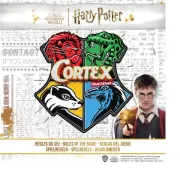
3 Juli 2025
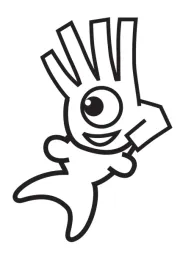
1 Juli 2025
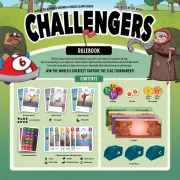
30 Juni 2025

19 April 2025

19 April 2025

19 April 2025

19 April 2025
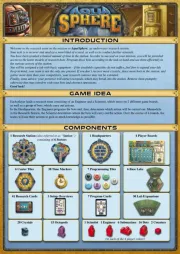
19 April 2025

6 April 2025
